| A | B |
|---|
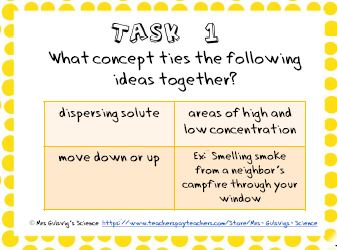 | concentration gradient |
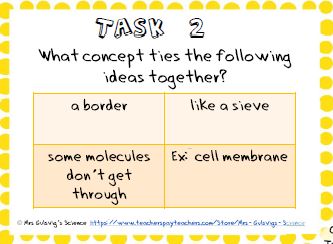 | semipermeable membrane |
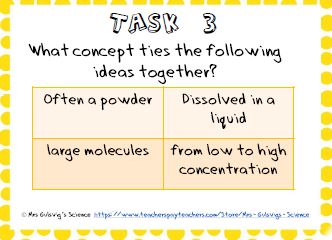 | solute |
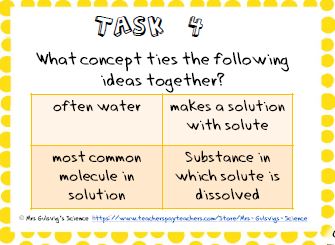 | solvent |
 | passive transport |
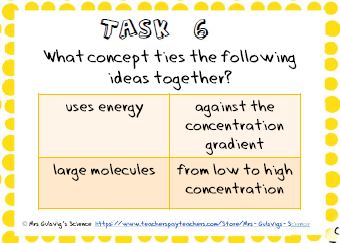 | active transport |
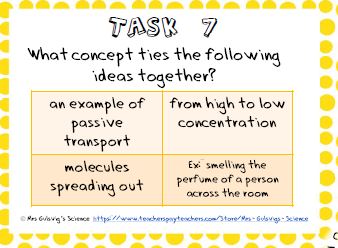 | diffusion |
 | facilitated diffusion |
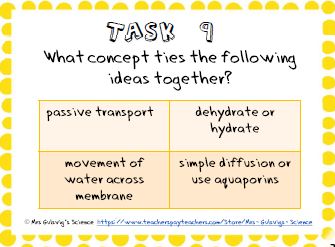 | osmosis |
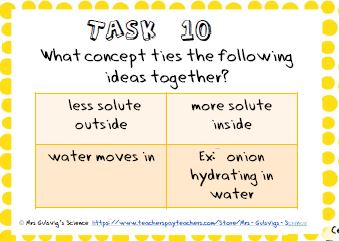 | hypotonic |
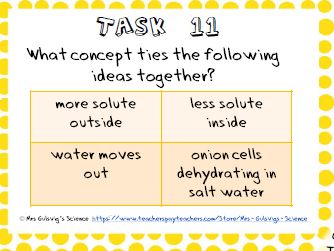 | hypertonic |
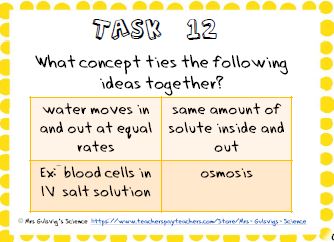 | isotonic |
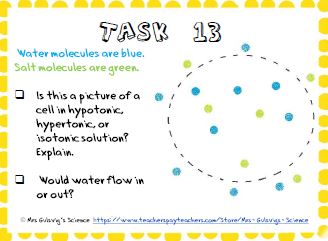 | isotonic; water moves in & out at same rate |
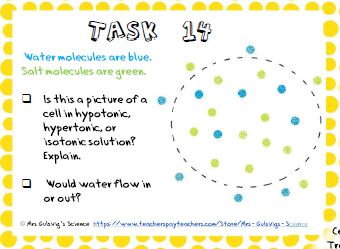 | hypotonic; water flows into the cell |
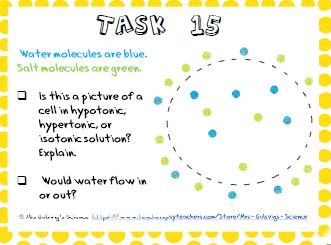 | hypertonic; water flows out of cell |
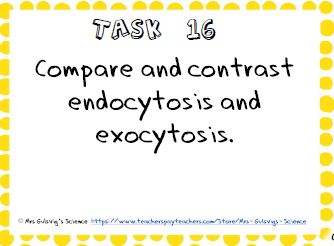 | Similarities: both move large particles across the cell membrane / Differences: Direction of movement (Endo=inside, exo=exits) |
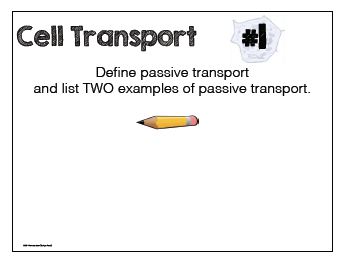 | Movement of materials across membrane using no energy; diffusion, facilitated diffusion, osmosis |
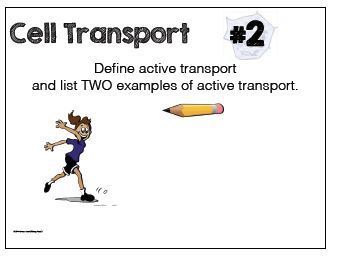 | movement of materials across membrane requiring energy; endocytosis, exocytosis, sodium-potassium pump |
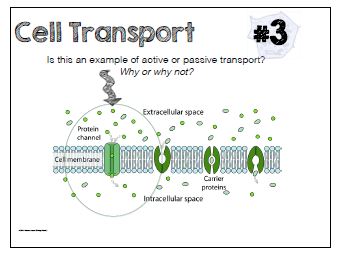 | passive b/c molecules flow down the concentration gradient from high to low |
 | carrier proteins assist in moving large or polar molecules thru membrane that can't pass thru phospholipids |
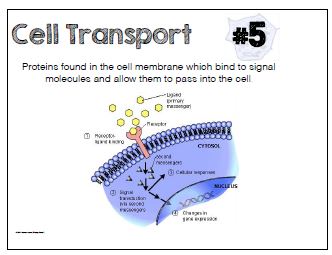 | receptor proteins |
 | to identify the cell as belonging to self; so immune system cells can recognize cells that don't belong |
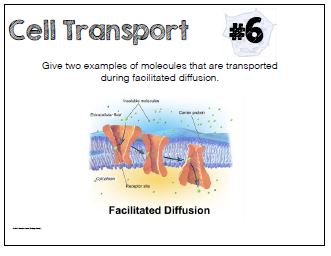 | sugars and amino acids |
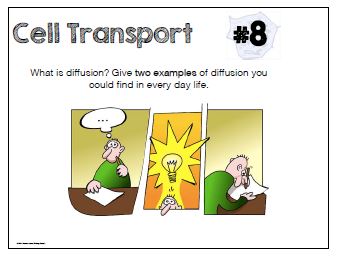 | tendancy of molecules to move to reach equilibrium; EX: smells of cooking foods moving thru house, O2/CO2 exchange in alveoli, nutrients diffusing thru digestive system membranes into bloodstream |
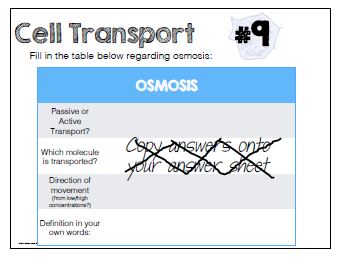 | passive; water; movement from high to low; osmosis is the diffusion of water |
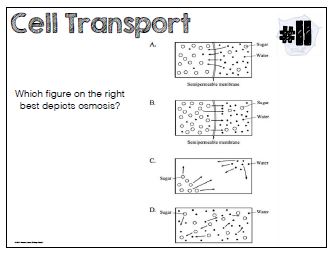 | A |
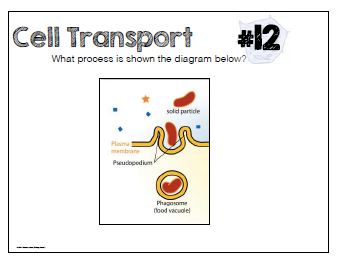 | phagocytosis - type of endocytosis where large particles are engulfed; cell eating |
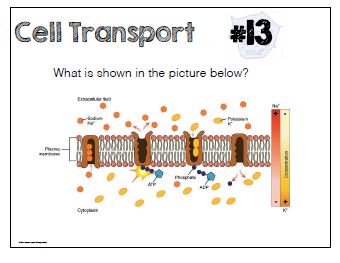 | sodium-potassium pump |
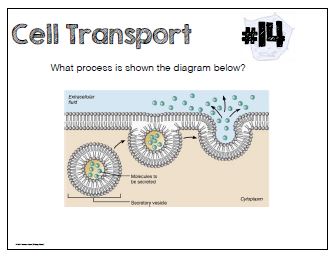 | exocytosis |
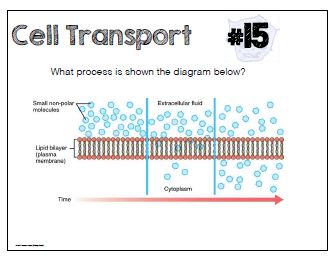 | simple diffusion |
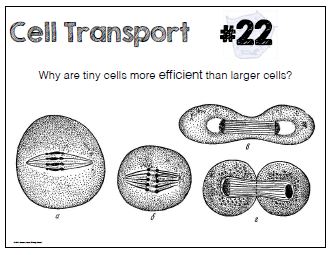 | tiny cells have a larger membrane surface area to cytoplasm ratio meaning there is no problem moving things in or out |
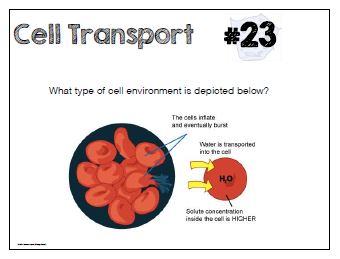 | hypotonic |
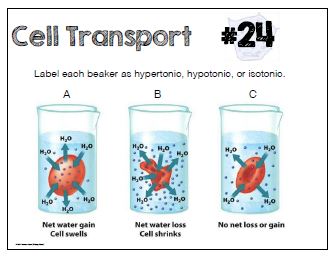 | A: hypotonic; B: hypertonic; C: isotonic |
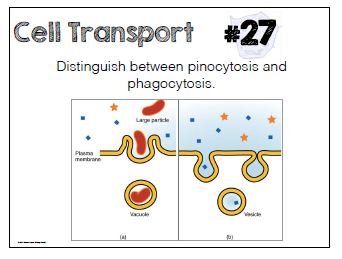 | phagocytosis - cell eating (cell takes in large particles); pinocytosis - cell drinking (cell takes in dissolved particles) |
 | O2 diffuses across respiratory membranes into the bloodstream from the lungs and CO2 diffuses out of bloodstream into the lungs |
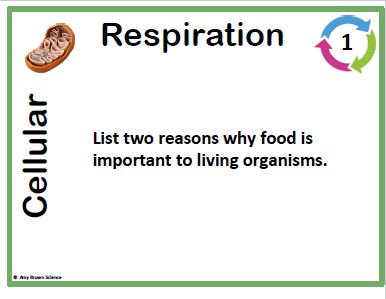 | food provides energy molecules & materials to build structures needed by the organism |
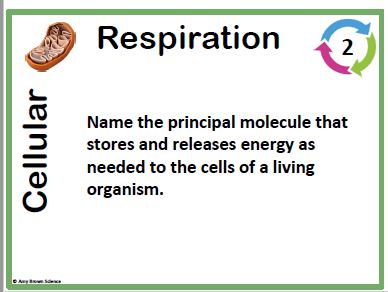 | ATP |
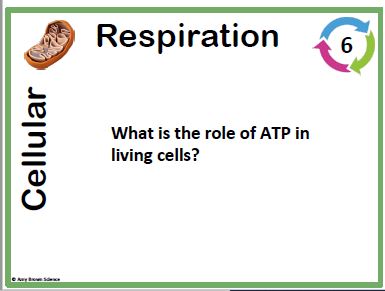 | ATP is the basic source of energy for all living organisms. |
 | By adding a phosphate to ADP, it becomes ATP. The bond between 2nd and 3rd phosphate is a high energy bond. |
 | energy is released and used for the work of the cell; ADP is formed |
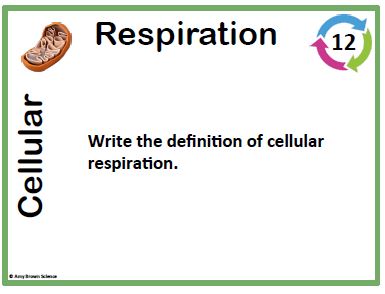 | Cellular respiration releases energy in glucose by breaking the bonds & capturing the energy, which is stored in the bond between the 2nd & 3rd phosphate of ATP. |
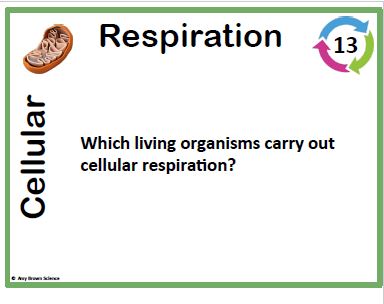 | ALL living organisms carry out cellular respiraton. |
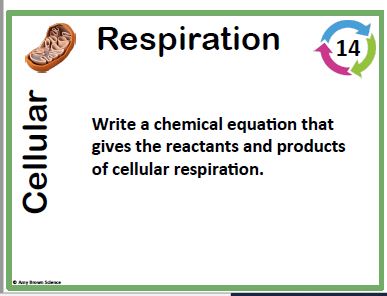 | 6O2 + C6H12O6 = 6CO2 + 6H2O + 36ATP |
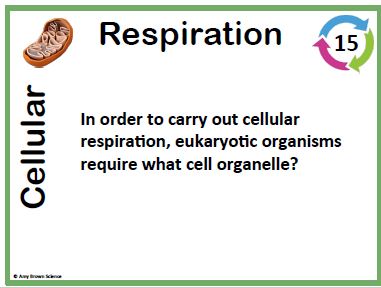 | mitochondria |
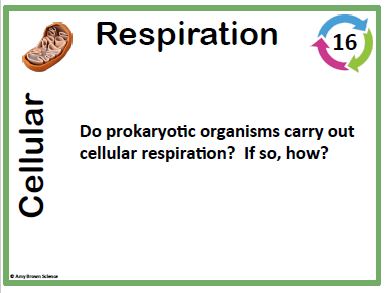 | Yes! The process occurs in the cell membrane rather than the mitochondria. |
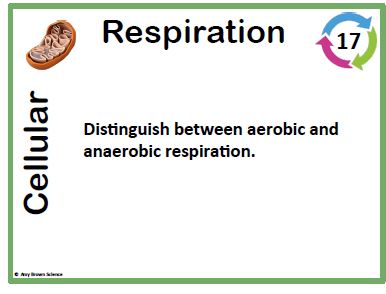 | Aerobic respiration requires oxygen. Anaerobic respiration does not require oxygen. |
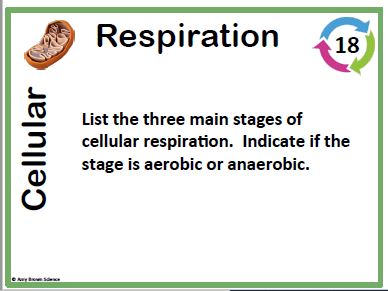 | Glycolysis (anaerobic); Kreb's Cycle (aerobic); Electron Transport Chain (aerobic) |
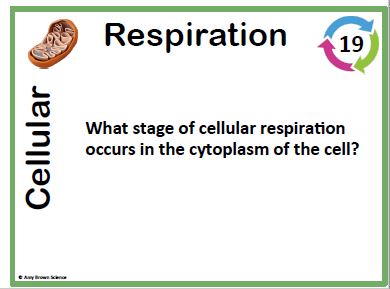 | Glycolysis |
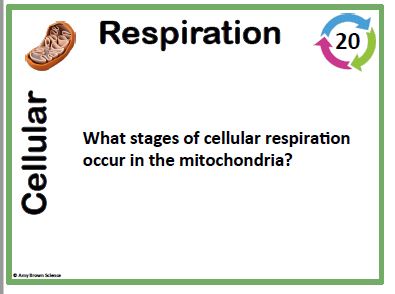 | Kreb's Cycle and Electron Transport Chain |
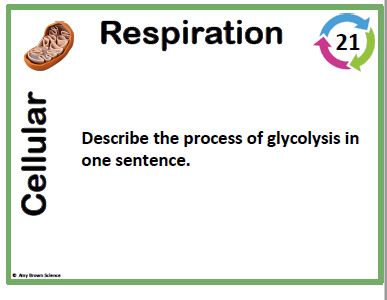 | Glycolysis breaks the bonds of glucose (releasing energized electrons) & makes 2 pyruvates. |
 | a - 2; b - 4 for a net of 2 ATP produced from glycolysis |
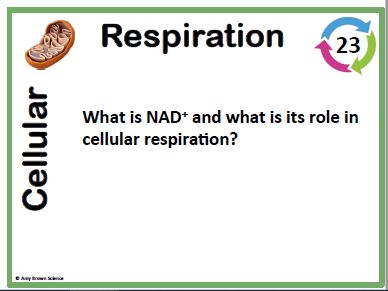 | NAD+ is an energy carrier; it accepts highly energized electrons & holds them until they are transferred to other molecules. |
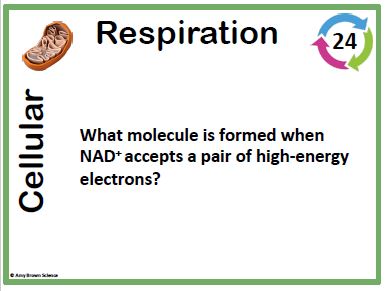 | NADH |
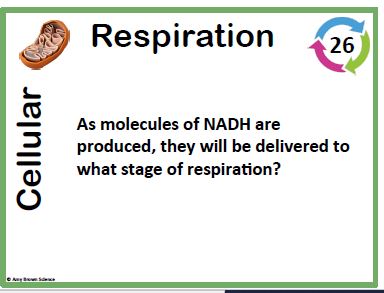 | NADH go to the Electron Transport Chain |
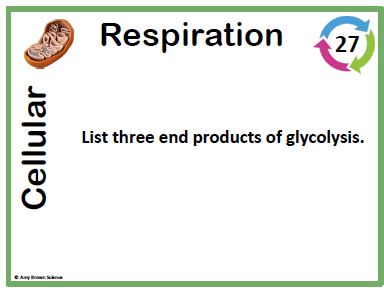 | 2 molecules of pyruvic acid; 2 NADH; net gain of 2 ATP |
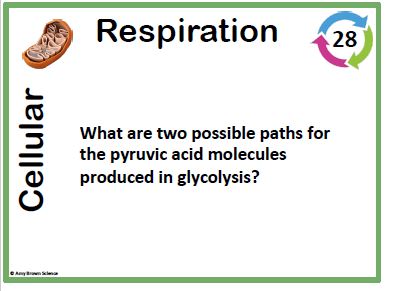 | If oxygen is present, pyruvic acid will go across the bridge to the Kreb's Cycle. If oxygen is not present, pyruvic acid will stay in the cytoplasm & undergo fermentation. |
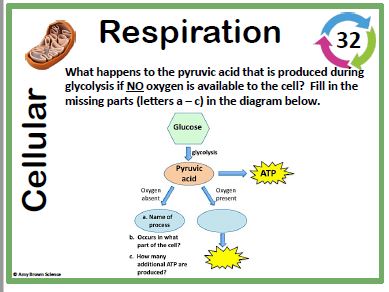 | a - fermentation; b - cytoplasm; c - no additional ATP are produced |
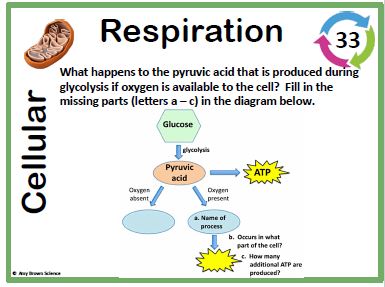 | a - aerobic respiration (Kreb's cycle & ETC); b - mitochondria; c - 34 additional ATP are produced |
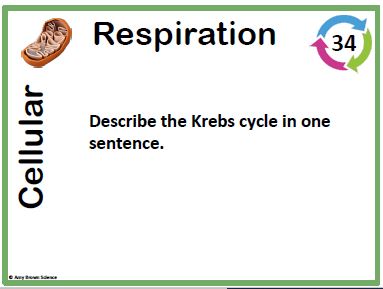 | The Kreb's cycle completes the break down glucose by breaking the bonds & releasing energized electrons which are used to make ATP. CO2 is released as waste product. |
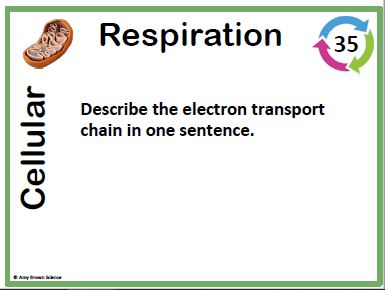 | The ETC uses high energy electrons from Glycolysis & Kreb's cycle to convert ADP into ATP. |
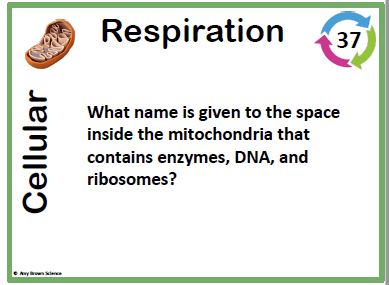 | matrix |
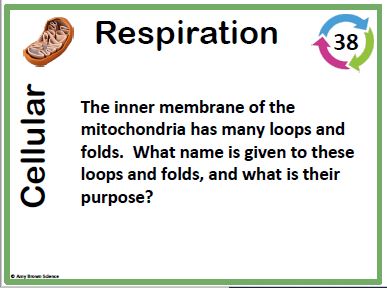 | cristae or inner mitochondria membrane |
 | Kreb's cycle - occurs in the matrix; ETC - occurs in the cristae (inner membrane) |
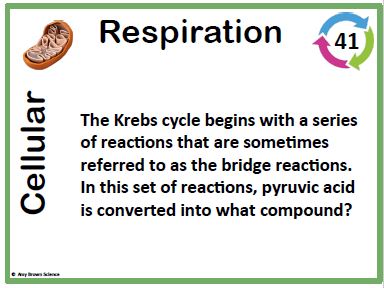 | Acetyl CoA |
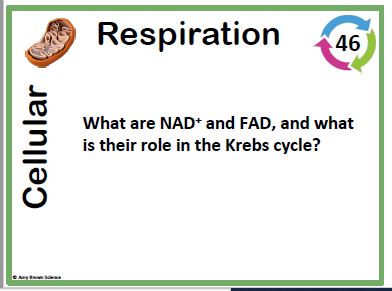 | NAD+ and FAD are electron carriers. They will deliver the high-energy electrons of hydrogen to the ETC. |
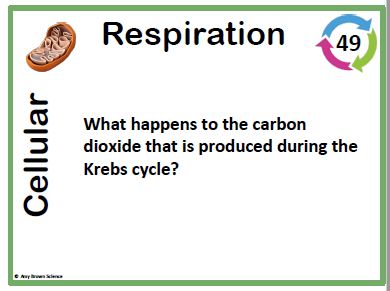 | it is released as waste |
 | The high energy electrons carried by NADH and FADH2 will be used in the ETC to make large amounts of ATP. |
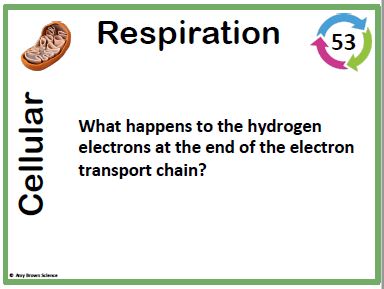 | The electrons, along with hydrogen ions, are combined with oxygen to form water. |
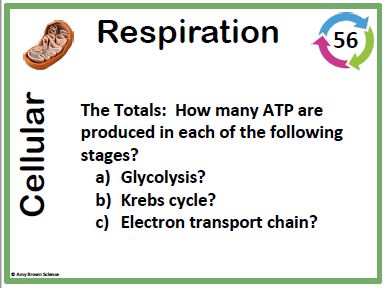 | Glycolysis produces 2 ATP; Kreb's cycle produces 2 ATP; ETC produces 32 ATP |
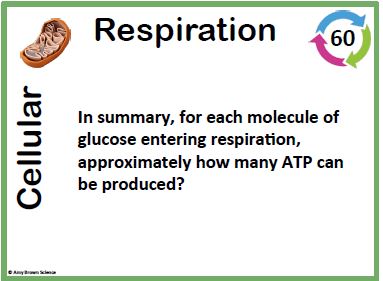 | 36-38 ATP |
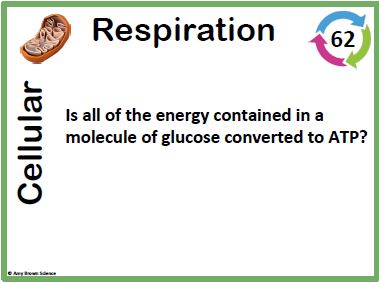 | NO! About 40% of energy in glucose is converted to ATP. 60% is lost as heat. |
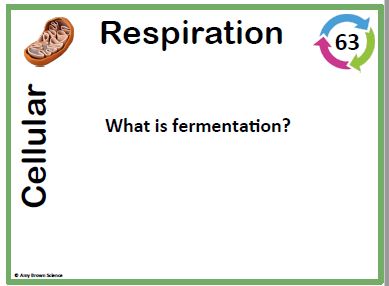 | Fermentation is the process in which cells release energy from organic molecules (glucose) in the absence of oxygen. |
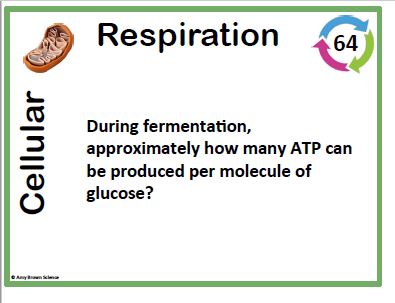 | 2 ATP are made from fermentation from 1 molecule of glucose |
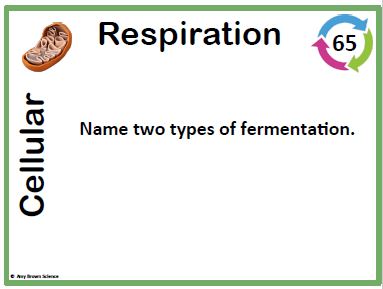 | alcoholic fermentation and lactic acid fermentation |
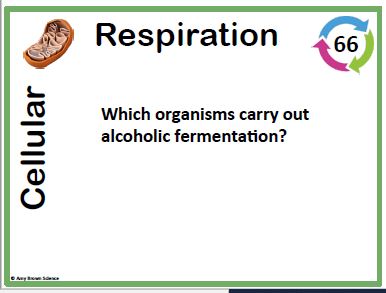 | plants and yeast |
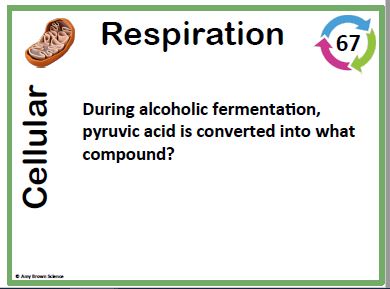 | ethyl alcohol |
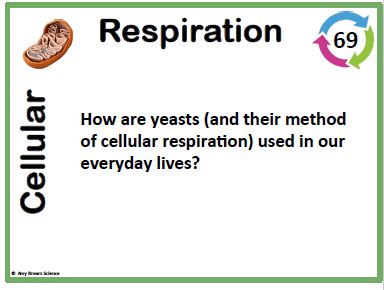 | Yeast are used to make alcohol and bread. CO2 given off makes bread rise. |
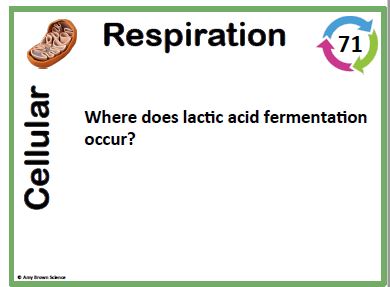 | lactic acid fermentation occurs in animal cells and some bacteria |
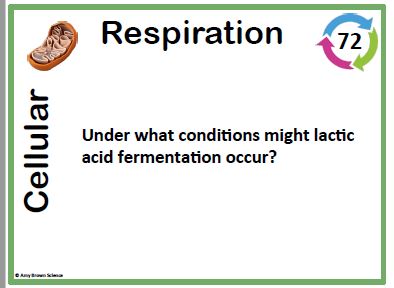 | Lactic acid fermentation occurs during strenuous excercise, when cells get w/o oxygen. |
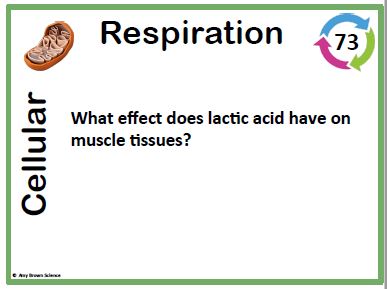 | lactic acid makes muscles sore |
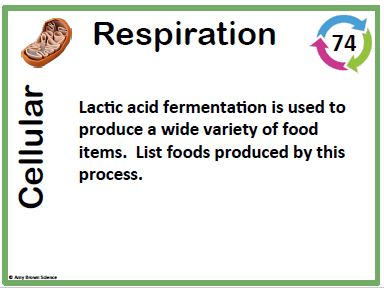 | Cheese, yogurt, buttermilk, sour cream, pickles, sauerkraut |
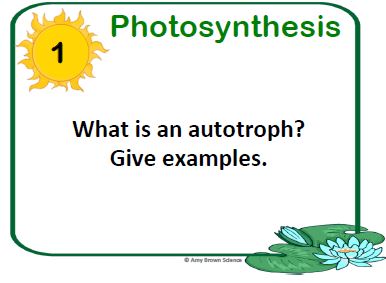 | An autotroph can produce its own food, EX: plants, cyanobacteria (prokaryote), algae (protist) |
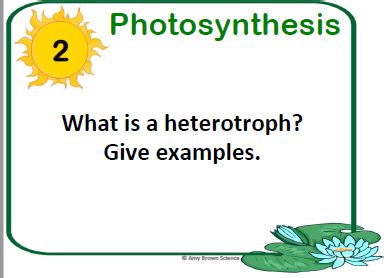 | Heterotrophs have to consume autotrophs or other heterotrophs for their energy. Ex: cows, rabbits, mushrooms, birds, fish, you |
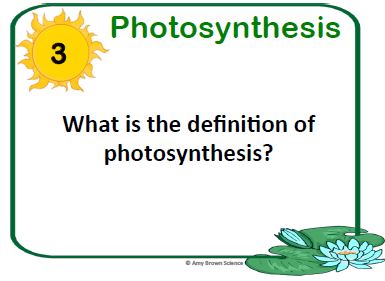 | Photosynthesis is the process autotrophs use to capture energy from the sun and store it in the bonds of glucose molecules. |
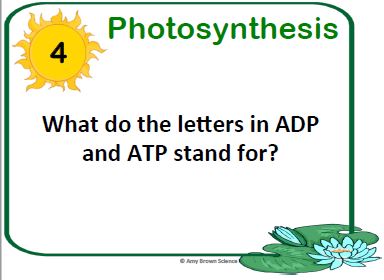 | ATP - Adenosine Triphosphate; ADP - Adenosine Diphosphate |
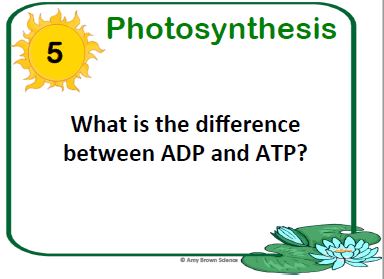 | ADP is energy poor, while ATP is energy rich. |
 | ATP is the basic source of energy for all cells. |
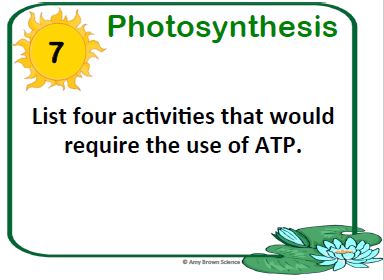 | active transport, muscle contractions, photosynthesis, cellular respiration, cell division |
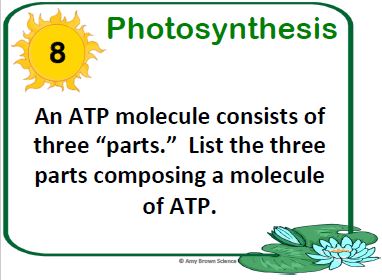 | Adenine (contains nitrogen), ribose sugar, 3 phosphate groups |
 | Life on earth depends on oxygen and glucose, products of photosynthesis. |
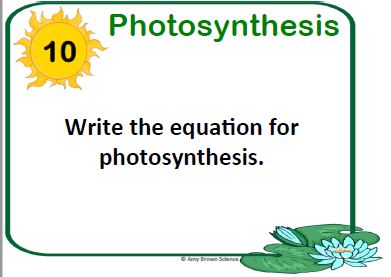 | 6H20 + 6CO2 + sun = 6O2 + C6H12O6 |
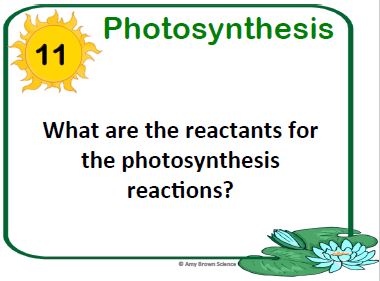 | The reactants of photosynthesis are water and carbon dioxide. |
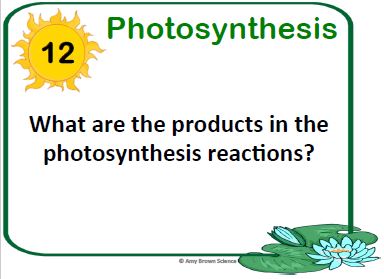 | The products of photosynthesis are oxygen and glucose. |
 | Plants obtain carbon dioxide from the atmosphere and water from the ground. |
 | The colors of the visible light spectrum are ROY G BIV (red, orange, yellow, green, blue, indigo, violet) |
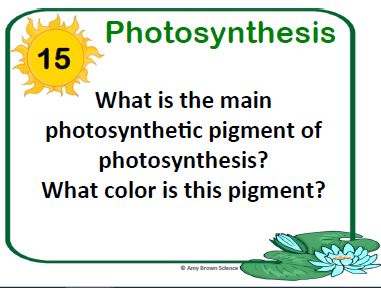 | The main photosynthetic pigment is chlorophyll, which is green. |
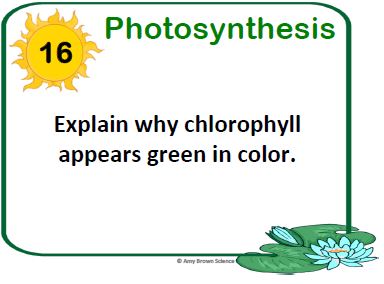 | Chlorophyll appears green b/c chlorophyll absorbs reds, blues and violets best & doesn't absorb green, which is reflected, making chlorophyll appear green. |
 | Chlorophyll captures energy from the sun & electrons found in the pigment become very excited. This energy is eventually stored in the bonds of glucose molecules. |
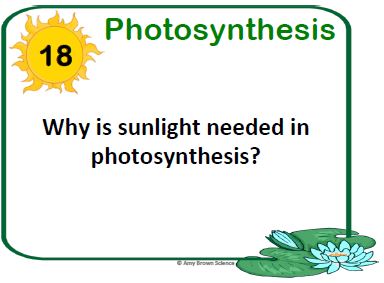 | Energy from the sunlight is what makes photosynthesis work. Light energy is transformed into chemical energy stored in bonds of glucose. |
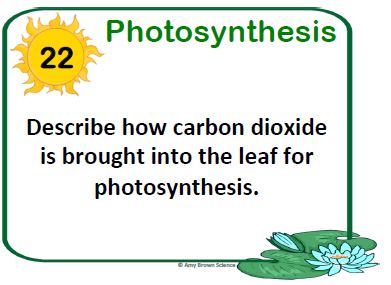 | Carbon dioxide is brought into the leaf cells thru pores called stomata. |
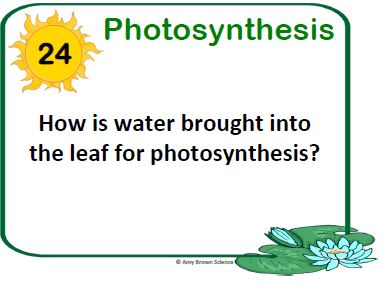 | Water is absorbed by the roots of plants. |
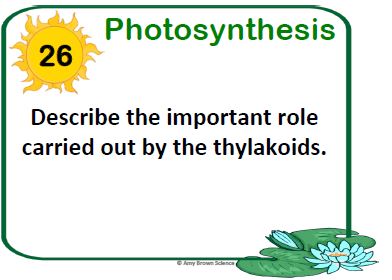 | Thylakoids are sacs that contain the chlorophyll molecules. |
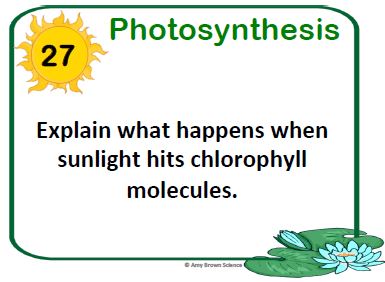 | The electrons of the chlorophyll molecules become very excited. Excited electrons are electrons that have gained a great deal of energy. Chlorophyll’s electrons absorb the energy from the sun. |
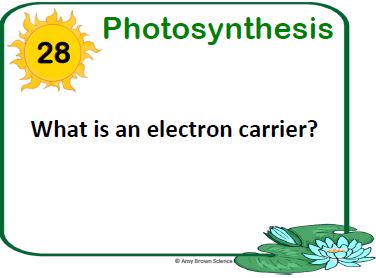 | An electron carrier is a compound that can accept a pair of high-energy electrons and transfer them, along with most of their energy, to another molecule. |
 | NADP+ |
 | Light Dependent Reaction – Occurs within the thylakoid membranes. Light Independent Reaction – Occur in the stroma. |
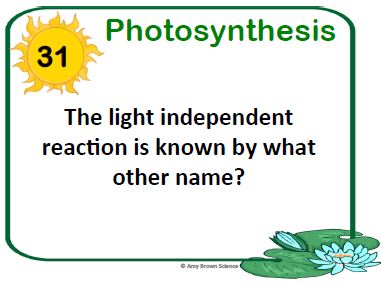 | The Calvin Cycle |
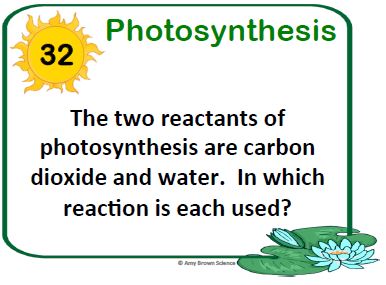 | Water is used in the light dependent reaction. Carbon dioxide is used in the light independent reaction. |
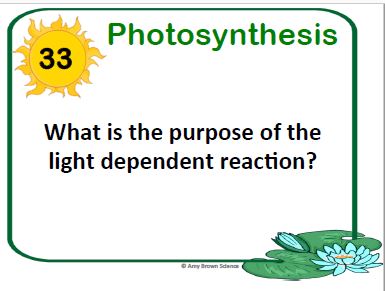 | The light dependent reaction produces ATP and NADPH that are needed for the light independent reactions. |
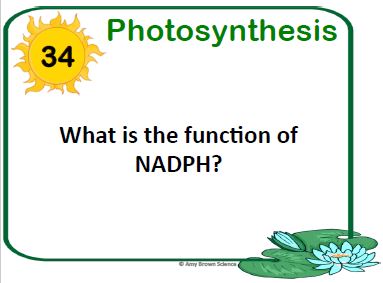 | The main function of NADPH is to carry the high-energy electrons produced in the light dependent reactions to the stroma to be used in the Calvin cycle. |
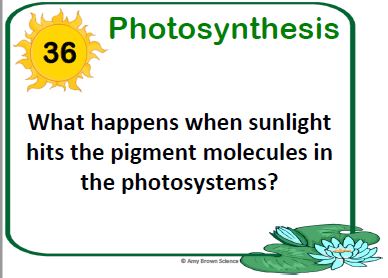 | Chlorophyll’s electrons absorb the light energy. These high-energy electrons are passed to the electron transport chain. |
 | Oxygen, hydrogen ions (protons), and electrons. |
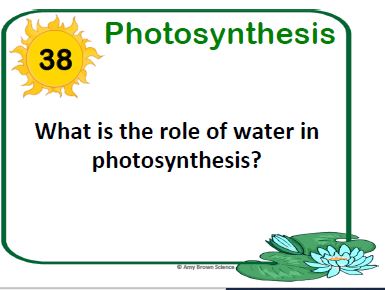 | Water splits to form oxygen, hydrogen ions & electrons (they replace the excited electrons which have moved to the ETC from the chlorophyll). Hydrogen ions are used in the ETC to run the ATP synthase to make ATP. |
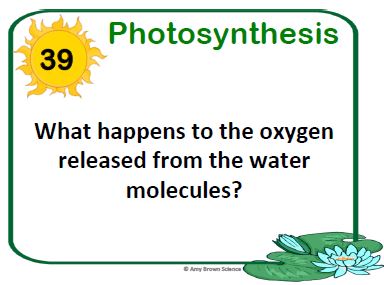 | It is released as a by-product to the atmosphere. |
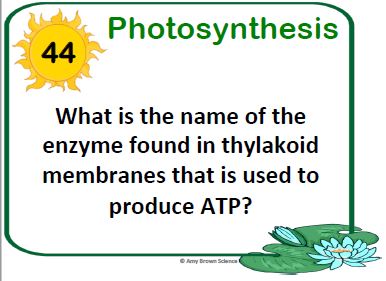 | ATP Synthase |
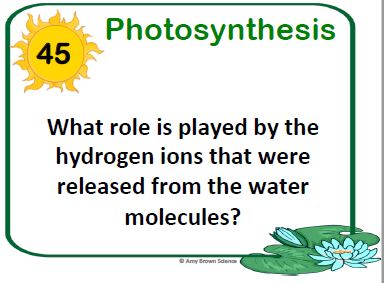 | The hydrogen ions flow through the enzyme ATP synthase from an area of high concentration to an area of lower concentration, causing the enzyme to spin, which generates energy to convert ADP to ATP. |
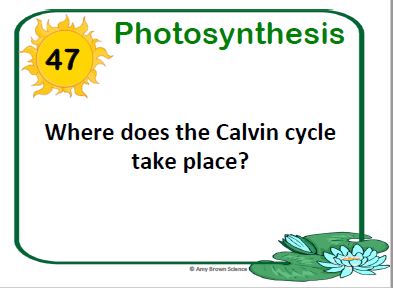 | in the stroma of the chloroplast |
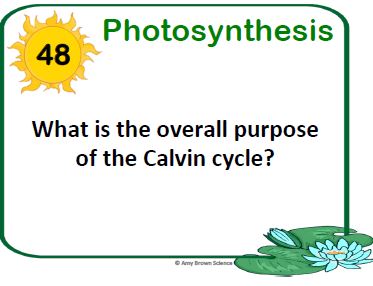 | to 'fix' carbon dioxide by adding hydrogen & high energy electrons & ATP to form glucose |
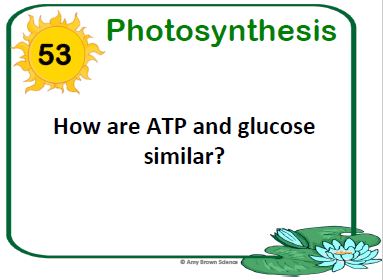 | Both molecules store chemical energy for the cell. |
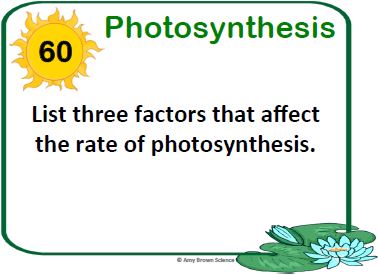 | Temperature, amount of available water, and light intensity. |